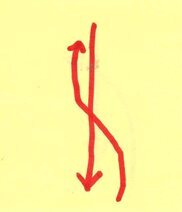Will it be nice that when you see a punch that's coming toward your face, instead of to dodge it, you throw a punch to interrupt it?
Advantage? You will not be put into defense mode, and you won't be afraid any punch (because you have strong anti-missile system).
- Your opponent throws a left jab (your opponent sends a missile).
- Your throw a right curved jab at the same time (you send out anti-missile).
Your right curved jab go over your opponent's arm, press his left arm down, your right punch then land on his face. Even if your 1st curved jab may only function as to knock your opponent's jab down, your 2nd curved jab can still land on his head (similar to a right low hook, followed by a right high hook).
You should not allow your opponent's fists to fly in front of your face. You should try to develop a strong "anti-missile system" to guard your air space.
Your thought?
Advantage? You will not be put into defense mode, and you won't be afraid any punch (because you have strong anti-missile system).
- Your opponent throws a left jab (your opponent sends a missile).
- Your throw a right curved jab at the same time (you send out anti-missile).
Your right curved jab go over your opponent's arm, press his left arm down, your right punch then land on his face. Even if your 1st curved jab may only function as to knock your opponent's jab down, your 2nd curved jab can still land on his head (similar to a right low hook, followed by a right high hook).
You should not allow your opponent's fists to fly in front of your face. You should try to develop a strong "anti-missile system" to guard your air space.
Your thought?
Last edited:



